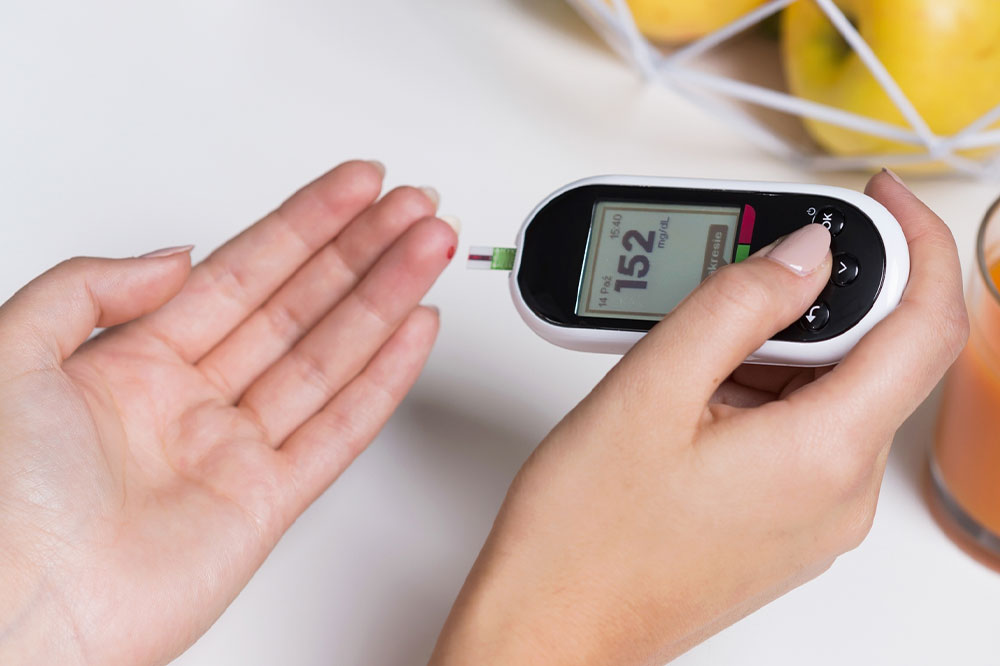High blood sugar and diabetes – symptoms, risk factors, and more
What does it mean to have high blood sugar, and what does it have to do with diabetes? The two issues are interlinked as people with diabetes have high blood sugar levels, i.e., the disease results in excessive amounts of sugar in one’s blood. Diabetes affects 537 million adults, however, one in two people with the condition remain undiagnosed. So, understanding the disease is a crucial first step in dealing with the symptoms.

Understanding high blood sugar and diabetes
Diabetes is a serious metabolic disorder that is one of the most common health concerns around the world. The food we eat is broken down into sugar in our body, and this sugar is released into the bloodstream. The pancreas then releases a hormone called insulin to respond to the increase in blood sugar (or glucose). Insulin prompts the cells to use the blood sugar as energy or fuel to carry out different processes and life-sustaining activities in the body. However, when affected by diabetes, the body either does not produce enough insulin or cannot adequately utilize the insulin. This results in the accumulation of sugar in the bloodstream, and over time, this build-up of glucose can lead to serious health problems.
Types of diabetes
Type 1 diabetes: This is an autoimmune disorder, which means the body attacks itself. So, the cells responsible for making insulin stop producing it. The World Health Organization suggests that around 9 million people have been diagnosed with diabetes have type 1. It is usually detected in children, teens, and young adults. There is no cure for this condition and patients have to regularly take insulin.
Type 2 diabetes: Here, insulin is produced but cannot be utilized properly, increasing the blood glucose. About 90-95% of people diagnosed with diabetes have type 2 and the condition is common among adults.
Gestational diabetes: This type develops in pregnant women when their bodies cannot produce enough insulin during the gestation period. High sugar levels can harm the baby’s health. The risk of type 2 diabetes increases for the mother even as gestational diabetes goes away after the delivery.
Prediabetes: This is a condition where the blood glucose is higher than normal but not high enough to be categorized as type 2 diabetes. So, a person has diabetes if their blood sugar levels are above 125mg/dL in the morning (fasting) and the normal range lies between 70 and 110 mg/dL. Any value in the middle range, i.e., between 110 and 125 mg/dL, indicates prediabetic levels.
Risk factors
For type 1, age and family history are the prominent risk factors. For type 2, apart from prediabetic blood sugar levels, other risk factors as suggested by the CDC are:
Being 45 or older
Family history of the condition
Sedentary lifestyle or physical activity frequency being less than three times a week
History of gestational diabetes
Race
Certain other metabolic disorders
In addition to the above risk factors, the following factors also increase the risk of gestational diabetes:
History of gestational diabetes (during earlier pregnancies)
Being over 25 years old
Family history of type 2 diabetes
Polycystic ovarian syndrome
Symptoms of type 2 diabetes
People with the condition can experience these common signs and symptoms:
Increased thirst
Frequent urination
Extreme hunger
Fatigue
Irritability
Blurred vision
Slow-healing sores and wounds
Frequent infections (gums, skin, and vaginal infections)
High level of ketones in the urine
Complications of chronic high blood sugar
Long-term high blood sugar can cause serious health complications, which include:
Kidney impairment and failure (or nephropathy)
Cardiovascular complications, including stroke
Lower limb gangrene, which can result in amputation
Eye damage, including retinopathy, blurred vision, and glaucoma
Prevention
While there is no cure for type 1, gestational and type 2 diabetes can be prevented by following these tips:
Adopt a healthy lifestyle and manage stress levels
Incorporate moderate physical activity into the daily routine (at least 150 minutes a day)
Getting rid of unhealthy lifestyle choices
Tips to control blood sugar
Harvard Health suggests making the following changes to the nutritional regimen can help lower blood sugar levels:
Choosing whole grains over refined grains and highly processed carbohydrates
Increasing fluid intake by drinking water, coffee, or tea instead of sugary drinks
Choosing healthy fats instead of trans fats
Limiting red meat and processed meat consumption
Adding protein-rich food like nuts, beans, whole grains, poultry, and fish to meals
Persistent concerns should be communicated to the doctor, who can recommend the right treatment to help patients deal with high blood sugar and diabetes symptoms.


